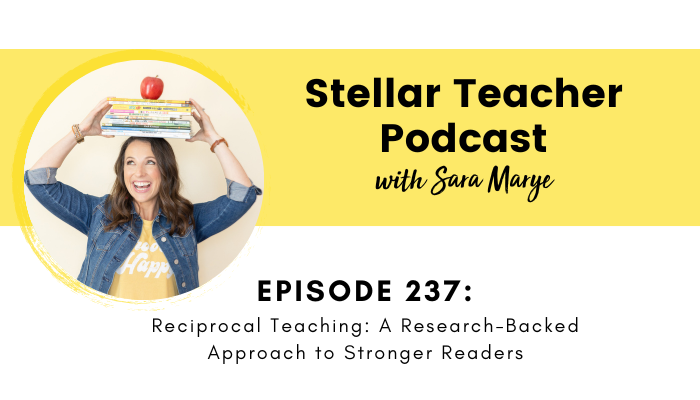
Click play below to listen to the impact reciprocal teaching can have on reading comprehension and how to implement it in your classroom.
If you’re looking for a structured, research-backed approach to improving your students’ reading comprehension, this episode is for you. We’re diving into reciprocal teaching, a highly effective strategy that helps students become active, engaged readers by focusing on four key comprehension skills: predicting, questioning, clarifying, and summarizing. This approach encourages collaboration, critical thinking, and independent learning—giving students the tools they need to deeply understand any text.
Reciprocal teaching isn’t just another comprehension strategy—it’s a powerful, interactive routine that fosters student-led discussions and enhances metacognitive awareness. Research has consistently shown that students who engage in reciprocal teaching make significant gains in comprehension. And the best part? It’s easy to implement with any text and across all subject areas. In this episode, I’ll break down how to introduce reciprocal teaching in your classroom, step by step, so your students can start benefiting from it right away.
By the end of this episode, you’ll have a clear roadmap for setting up reciprocal teaching in your classroom, from modeling and guided practice to full student-led implementation. Whether you teach third, fourth, or fifth grade, this strategy can make a meaningful impact on your students’ ability to process and engage with complex texts. So, if you’re ready to boost comprehension and empower your students as confident, independent readers, let’s dive in!
In this episode on reciprocal teaching, I share:
- A clear breakdown of what reciprocal teaching is and why it’s a powerful comprehension strategy.
- The four key strategies—predicting, questioning, clarifying, and summarizing—and how they support deeper reading comprehension.
- Research-backed evidence on why reciprocal teaching is especially effective for struggling readers.
- Step-by-step guidance on how to introduce, model, and implement reciprocal teaching in your classroom.
- Practical tips for selecting and chunking texts to maximize engagement and comprehension.
- Ways to structure student roles and discussions to encourage collaboration and critical thinking.
- How to turn reciprocal teaching into a consistent, easy-to-use routine that benefits all students.
Resources:
- Join The Stellar Literacy Collective
- Sign up for my Private Podcast: Confident Writer Systems Series
- Sign up for my FREE Revision Made Easy email series
- If you’re enjoying this podcast, please leave a review on Apple Podcasts!
Related Episodes and Blog Posts:
- Episode 235, 3 Powerful Routines to Boost Reading Comprehension in Your Classroom
- Episode 182, What We Need to Understand About Reading Comprehension (And 8 Instructional Strategies)
- Episode 132, Two Simple Ways to Boost Engagement During Whole Group Lessons
Connect with me:
- Join my newsletter
- Shop my TPT store here
- Instagram: @thestellarteachercompany
- Facebook: The Stellar Teacher Company
More About Stellar Teacher Podcast:
Welcome to the Stellar Teacher Podcast! We believe teaching literacy is a skill. It takes a lot of time, practice, and effort to be good at it. This podcast will show you how to level up your literacy instruction and make a massive impact on your students, all while having a little fun!
Your host, Sara Marye, is a literacy specialist passionate about helping elementary teachers around the world pass on their love of reading to their students. She has over a decade of experience working as a classroom teacher and school administrator. Sara has made it her mission to create high-quality, no-fluff resources and lesson ideas that are both meaningful and engaging for young readers.
Each week, Sara and her guests will share their knowledge, tips, and tricks so that you can feel confident in your ability to transform your students into life-long readers.
Tune in on your favorite podcast platform: Apple, Google, Amazon, Spotify, Castbox, and more! If you’re loving this podcast, please rate, review, and follow!
Podcast (stellar-teacher-podcast): Play in new window | Download
If you’ve ever wondered how to help your students become active, independent readers who truly understand what they read, this episode is for you. Stick around as I break down what reciprocal teaching is, why it works, and how you can easily bring it into your classroom.
Hey there, Stellar Teacher, and welcome back to another episode!
Back in episode 235, I shared three literacy routines that, when implemented consistently, will help improve your students’ reading comprehension. If you haven’t listened to that episode yet, be sure to go back and check it out after this one. I mention this because, since we are still in the month of January, many of us view the start of the calendar year as an opportunity to reset, recalibrate, and get back on track with our goals. I wanted to use this month to share a variety of literacy routines that, when used consistently, will significantly impact your students’ reading comprehension.
So, I shared three routines in episode 235, and today, we are going to break down a strategy—or you could think of it as a routine—often referred to as reciprocal teaching. This strategy has been around since the 1980s, and multiple research studies have shown that it is an effective method to use in the classroom.
The first time this strategy appeared in research was in a 1984 study by Palincsar and Brown, titled Reciprocal Teaching of Comprehension-Fostering and Comprehension-Monitoring Activities. In this article, they introduced the idea of reciprocal teaching and shared results from various studies where it was implemented. They compared the reciprocal teaching method to a second intervention model that was used in a typical classroom setting and found that the classroom using reciprocal teaching showed greater gains and more consistent maintenance of those gains over time, which I think is pretty cool.
There have been many other research studies on reciprocal teaching. One notable study by Rosenshine and Meister, titled Reciprocal Teaching: A Review of the Research, analyzed multiple studies on the topic. I always appreciate articles like this because they review and synthesize existing research. This comprehensive review concluded that reciprocal teaching significantly enhances students’ reading comprehension skills across various classroom settings and with diverse student populations.
As educators, these research findings should get us really excited! When we discover a strategy like reciprocal teaching—one that has been tested in different instructional settings and with a variety of students and consistently leads to increased reading comprehension—we can feel confident that implementing it in our classrooms will benefit our students.
If you’ve never heard of reciprocal teaching before, I hope this episode serves as a crash course. My goal is that by the end of this episode, you’ll have enough information to get started with this highly effective routine in your classroom—maybe even as soon as this week!
So, let’s start by understanding what reciprocal teaching is. Ultimately, it is a structured, collaborative approach to reading that focuses on four key comprehension strategies: predicting, questioning, clarifying, and summarizing.
During the implementation of this strategy, students will work in small groups. Groups of four work really well, but you could also have students work in pairs. Each student will take turns becoming the teacher, facilitating a discussion about a chunk of the text. You’ll provide the group with a text that is broken up into four to six chunks, depending on the number of students. Each student will take a turn leading the discussion for a specific section of the text.
The goal is to actively engage students with a small section of the text. As the student leads the discussion, they will focus on using the four core strategies: predicting, questioning, clarifying, and summarizing. For example, before reading, students will predict what the text will be about or what might happen in that section, based on the title, illustrations, or what just happened in the previous section. While reading, they will generate questions about the content. After reading, they will clarify any confusing parts and summarize the main ideas from the text.
This approach encourages students to think critically, interact with the text, and collaborate with their peers. One of my favorite aspects of this strategy is its adaptability. It can be used with any subject area and any text, making it a great fit for upper elementary classrooms—perfect for third, fourth, and fifth-grade students.
Now that you have a general overview of the strategy, let’s talk about how you can easily implement it in your classroom. Using this strategy requires some preparation, both in selecting and preparing the text and in introducing the strategy to ensure students can successfully use it independently. You could explain the process to students this week and tell them to start reciprocal teaching right away. However, if we want students to be successful, we need to take the time to introduce, model, practice, and teach the strategy explicitly. That way, when they do this independently, they will feel confident and successful.
The first step is the prep work. Before modeling or having students practice, you’ll need to carefully select a text that works well for reciprocal teaching. Choose a text that is long enough to divide into multiple chunks, allowing each student in the group to take a turn as the teacher leading the discussion. However, make sure these sections are not too long—if students have to work through large passages, multiple paragraphs, or several pages in one session, they might experience fatigue or disengagement. At the same time, if the sections are too short, students may struggle to have meaningful discussions. Be strategic in selecting the text and determining the chunk sizes.
This strategy works particularly well with nonfiction texts since they are often already divided into headings and subheadings, making it easy to assign each section as a chunk. If using a chapter book with shorter chapters, students could complete one chapter as a chunk. Fiction texts can also work, but it’s important to consider the length of each section.
After selecting the text, ensure that the sections are clearly marked for students. If using a chapter book, the division is straightforward—Section One is Chapter One, Section Two is Chapter Two, and so on. If using an article, you might highlight different sections in various colors or copy and paste them onto separate pages to make them distinct. The key is to eliminate any confusion about where each section begins and ends. Since the ultimate goal is for students to work in groups independently, clear sectioning ensures a smooth process when they rotate roles and take turns leading discussions.
Once you’ve prepared your text, you’re ready to introduce reciprocal teaching to your students. Again, the goal is for students to eventually implement this strategy independently, but before they get there, they’ll need modeling and practice.
Start by explaining what reciprocal teaching is. Introduce the strategy and let students know that it will help them work through a text chunk by chunk. They will work in a small group with their peers, and for each chunk of text, they will complete four steps: make predictions, read the text, generate questions while reading, clarify any confusing parts after reading, and summarize what they’ve read. Once they complete these four steps for a section of the text, they will move on to the next chunk.
It might be helpful to have a poster or chart that explains each of these strategies and outlines the process. This way, students can easily remember what they need to do. Since this strategy involves multiple steps and moving parts, a visual aid can help students stay on track. They need to understand the four strategies and also recognize that after each section of text, they will rotate the role of the teacher and repeat the process. Providing them with a visual reference can support their understanding and implementation of the strategy.
Before students begin using the strategy on their own, it’s important to model it for them. The first time—possibly even the first two or three times—you will take on the role of the teacher, facilitating the discussion of the text. Begin by introducing a chunk of text, making predictions, and then reading the text aloud while students follow along. After reading, demonstrate how to generate questions, clarify confusing parts, and summarize what was read.
When modeling, it can be helpful to write down your thinking for each strategy on a sticky note or card. You could even color-code these notes or use a graphic organizer with labeled sections for predictions, questions, clarifications, and summaries. Showing students your written thoughts makes your thinking visible, helping them understand the process more clearly. Additionally, seeing all four strategies written out can help students become familiar with how to engage in the process themselves. You can also provide students with the same template, allowing them to take notes on each section as they work through the strategy in small groups.
After modeling, students will have a better understanding of the process, but they may not yet be ready to implement the strategy independently. To bridge this gap, consider using guided practice. In this phase, you will still act as the teacher, guiding students through the strategy. However, instead of providing all the responses yourself, you will prompt students to contribute their thinking for each of the four strategies.
Another option for guided practice is to complete the process as a whole class. As a class, work together to generate predictions, formulate questions, clarify confusing parts, and summarize the text. This collaborative approach allows students to build confidence and familiarity with the process before transitioning to working in small groups independently.
You could also have students volunteer to be the teacher, giving them a little more control. This allows them to experience what it’s like to lead the group, work through a selection of text, and apply the four strategies.
When you’re ready for students to start using reciprocal teaching in small groups, it’s a great opportunity to do a fishbowl activity. I know I’ve talked about fishbowl before on the podcast, but it’s a fantastic way for students to model the strategy for the class while you narrate what is happening.
To set this up, choose a small group of students who work well together, are independent, and feel confident. Practice reciprocal teaching with them first in a small group setting, and then ask if they’d be willing to demonstrate the process for the rest of the class. These students will model reciprocal teaching while the rest of the class observes.
Have them sit in the front of the room, perhaps in a circle, and instruct them to go through the discussion as if no one is watching. They will start by making predictions, reading the text, asking questions, and clarifying and summarizing as they normally would. Meanwhile, you’ll be on the outside narrating what’s happening, pointing out each step as they go. For example, you might say, “Okay, before they started reading, they made their predictions. Now they’re reading the text together. Now the teacher is facilitating the conversation by sharing questions.” By verbally reinforcing expectations while students watch their peers demonstrate the strategy, you’re helping solidify the process in a meaningful way. This can be an extremely effective step before having students implement reciprocal teaching on their own.
When it’s time for students to apply reciprocal teaching in small groups, you want to ensure they are set up for success. That’s why modeling and guided practice are so important. However, there are additional supports you can provide to help them be successful.
One helpful tool is a step-by-step checklist that students can take with them to their small groups. This ensures they remember the process and don’t have to constantly ask, “What do we do next?” A checklist functions like an agenda for the strategy, keeping them on track.
You can also provide a list of tasks, questions, or expectations for each strategy. For example, if a student is unsure about how to make a prediction, the guide could remind them to base their prediction on illustrations, the book cover, or details from the previous section. This type of resource helps clarify what to do at each step, reducing confusion when it’s time to summarize or generate questions.
Another useful tool is a note-taking document. Giving students a structured way to record their thoughts helps them prepare for the discussion and encourages participation. Even if a student isn’t the teacher for a particular section, they can still take notes, which serves as both accountability and engagement, ensuring that everyone is actively involved.
When assigning roles, you have two main options. You could have one student serve as the teacher for an entire chunk of text, modeling all four strategies and leading the discussion. Alternatively, you could assign different roles for each chunk. For example, one student might be responsible for making predictions in the first section, another would ask questions in the second section, another would clarify in the third, and so on. This way, students practice all four strategies without having to manage all of them at once.
You can experiment with both approaches and see which works best for your students. Regardless of how you structure it, having students take notes ensures active participation and keeps them engaged in the process.
That’s an overview of how reciprocal teaching works in the classroom, how to set it up, and how to get started with it.
But let’s talk about why this strategy is so powerful. First, it improves reading comprehension. As I mentioned, the research is clear that this is an effective strategy, and it is particularly beneficial for struggling readers. It helps struggling readers for several reasons.
Second, it gives them opportunities to practice the strategies that proficient readers use naturally. When you read as an adult, you instinctively make predictions, ask questions, and summarize—these processes happen automatically in the background. However, struggling readers may not realize that these are things they should be doing. Reciprocal teaching provides them with repeated practice using these strategies while also allowing them to see how their peers apply them. This exposure to other students’ thinking reinforces comprehension skills in a meaningful way.
Additionally, this strategy builds students’ confidence. By taking on the role of the teacher and facilitating discussions, students become more comfortable using comprehension strategies. As their confidence grows, they will feel more capable of applying these skills to increasingly challenging texts.
Reciprocal teaching also strengthens metacognitive skills—the ability to monitor one’s own understanding and take action when something doesn’t make sense. I love that the strategy includes a clarifying component, as it encourages students to identify parts of the text that may be confusing and work through the meaning. Instead of relying on others to clarify, they learn how to resolve misunderstandings on their own.
Beyond comprehension, this strategy fosters collaboration. Students work together in small groups, learn from one another, and develop essential communication and leadership skills. The benefits of reciprocal teaching extend far beyond reading comprehension, making it an incredibly valuable classroom routine.
It may seem like a lot to get this strategy up and running, but remember—once you introduce it, it becomes a routine or tool that you can apply to any text in any subject. While it might take a couple of sessions to model and practice, once students understand the process, it becomes a powerful tool that enhances every reading experience.
So I challenge you—make a plan to introduce reciprocal teaching to your students this week, and commit to using it at least once a week for the remainder of the year. Just try it out and see what happens! Think about this: if you introduce the strategy now, at the end of January, and implement it once a week until the end of the school year, imagine how much your students’ comprehension and confidence could grow.
Let me know if you’re going to take that challenge! And don’t forget—if you haven’t already, go back and listen to episode 235, where I shared three additional routines that will help boost your students’ comprehension.
I’m so excited for you and your students this semester. We’re only one month into 2025, and already, you are equipped with several research-backed strategies that are proven to be effective. Be an action taker—don’t just listen to the podcast and think, Oh, that’s a great idea. Take what you’ve learned and start implementing it in your classroom. Your students will be so grateful that you did, and just know that we are cheering you on.
You have so many great things ahead of you this semester. Have a stellar week, and I’ll see you back here next Monday!

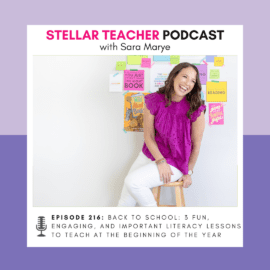
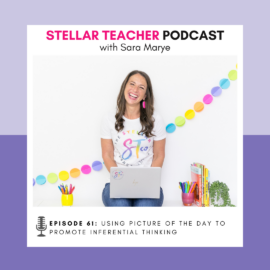
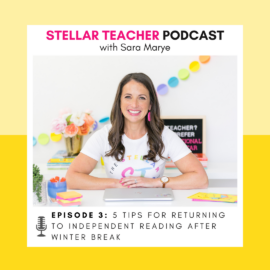
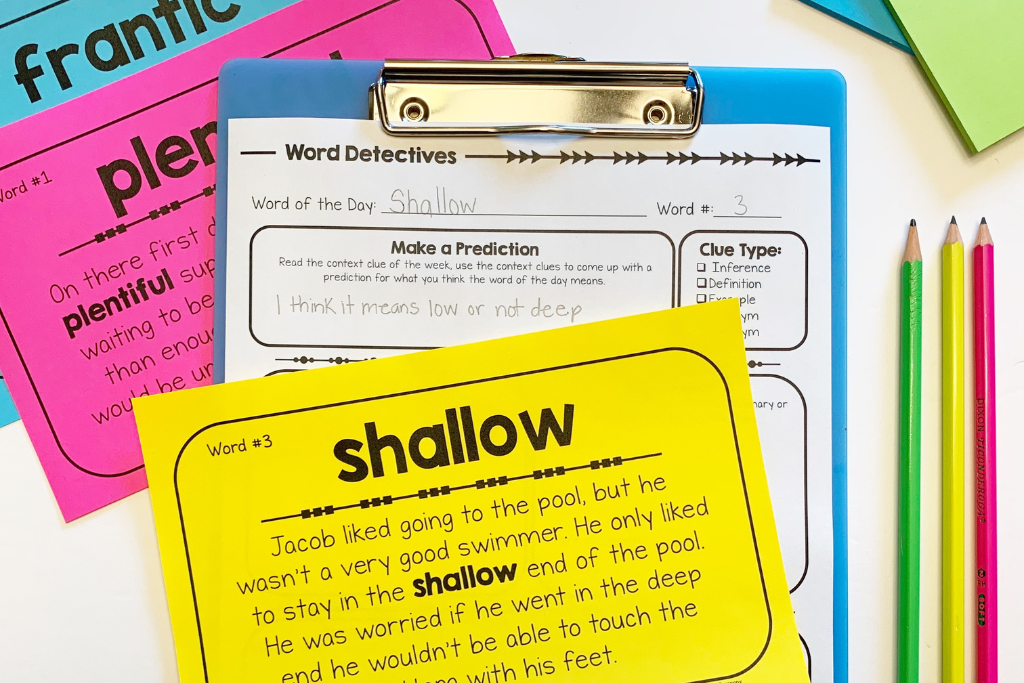

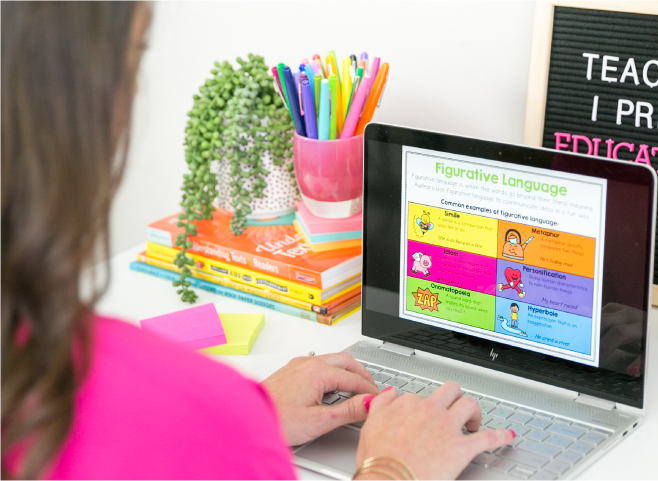

Leave a Comment
You must be logged in to post a comment.